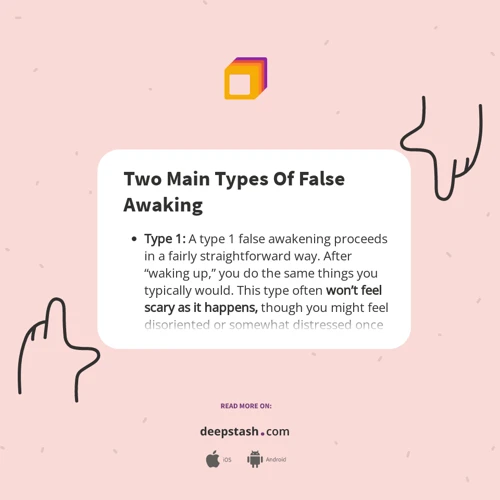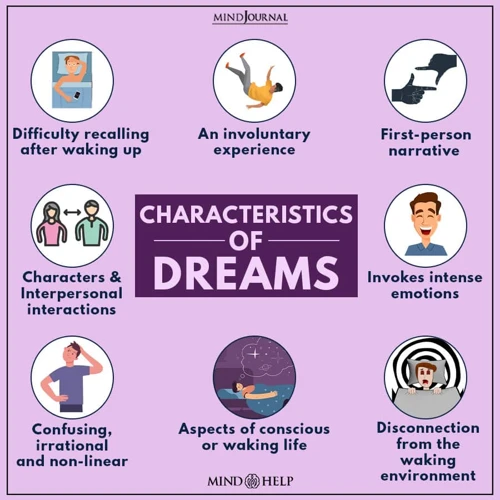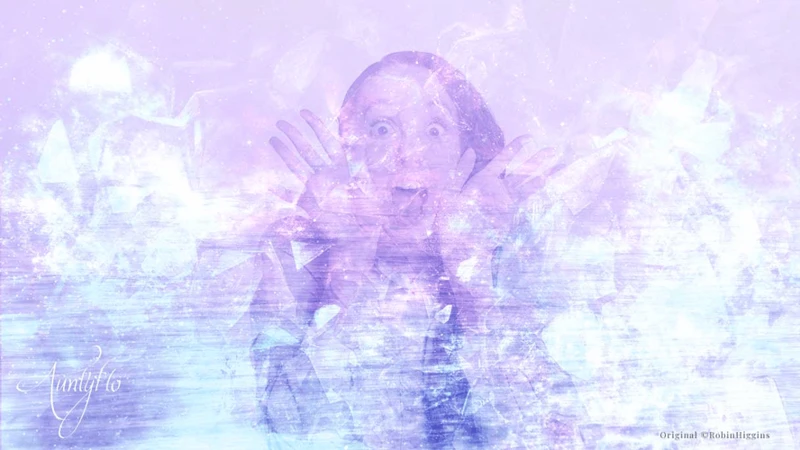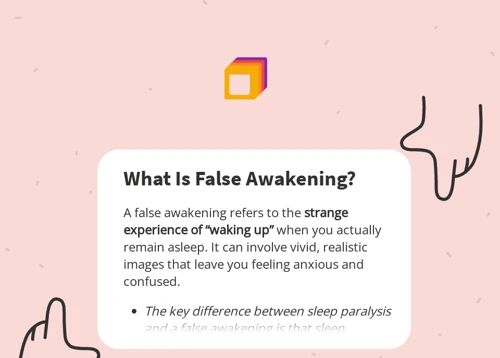Have you ever woken up from a dream, only to realize that you’re still dreaming? This puzzling phenomenon, known as False Awakening Dreams, can leave you feeling disoriented and questioning the boundaries between reality and the dream world. In this article, we will explore the psychological perspective on False Awakening Dreams, delving into the theories behind their occurrence, the impact they have on the subconscious mind, and how to interpret and manage these intriguing experiences. Join us on this journey of exploration into the fascinating realm of False Awakening Dreams.
What are False Awakening Dreams?

False Awakening Dreams are a unique type of dream in which the dreamer believes they have woken up from sleep, only to realize later that they are still in a dream state. This phenomenon can be disorienting and perplexing, often blurring the lines between reality and the dream world. During a false awakening, individuals may go through their morning routine, such as getting out of bed, brushing their teeth, or even going to work, only to wake up again and realize that none of it was real. These dreams can be incredibly vivid and detailed, making it challenging to distinguish them from reality. False Awakening Dreams can occur sporadically or in a recurring pattern, leaving individuals questioning the nature of their experiences and the meaning behind them.
In some cases, False Awakening Dreams can serve as a pathway for self-discovery and personal growth. Exploring the themes and symbolism within these dreams can provide valuable insights into the subconscious mind and bring unresolved emotions or conflicts to the surface. Understanding the causes and interpretations of False Awakening Dreams can offer valuable guidance for individuals seeking to delve deeper into their own psyche and find meaning in their dream experiences. To learn more about the common themes and interpretations of False Awakening Dreams, check out our article here.
The Psychology behind False Awakening Dreams

The Psychology behind False Awakening Dreams is a fascinating subject that explores the various theories and explanations behind why these dreams occur. One prominent theory is the Freudian interpretation, which suggests that False Awakening Dreams may serve as a channel for repressed desires and unresolved conflicts within the subconscious mind. According to Freud, these dreams can reveal hidden wishes or fears that are disguised and distorted within the dream narrative. Another perspective is the cognitive explanation, which focuses on the brain’s processing of information during sleep. This theory suggests that False Awakening Dreams occur when the brain struggles to accurately perceive and interpret sensory information, leading to a false sense of awakening. Additionally, the activation-synthesis theory posits that False Awakening Dreams are a result of the brain’s attempt to make sense of random neural activity during REM sleep. By understanding the psychological theories behind False Awakening Dreams, we can gain insights into their potential role in self-discovery and personal growth. To learn more about the causes and interpretations of False Awakening Dreams, you can check out our article here.
1. Freudian Interpretation
One interpretation of False Awakening Dreams from a Freudian perspective focuses on the concept of wish fulfillment. According to Sigmund Freud, dreams serve as a pathway for the expression of repressed desires and unconscious thoughts. In the case of False Awakening Dreams, the individual’s desire to wake up and face reality may be hindered by unresolved conflicts or unfulfilled wishes. The dreamer may be experiencing a form of escape from the challenges of their waking life, using the dream state as a way to avoid confronting their true feelings and desires.
Freud suggested that dreams often contain symbolic representations of our hidden desires and emotions. In the context of False Awakening Dreams, symbols within the dream may provide clues about the individual’s unconscious desires or the issues they are trying to avoid. For example, repeatedly dreaming of being unable to wake up may indicate a fear of facing reality or an unwillingness to confront a difficult situation. By analyzing the symbolism within False Awakening Dreams, individuals can gain insights into their subconscious mind and uncover hidden aspects of themselves.
It is important to note that Freud’s interpretations are just one perspective among many when it comes to understanding dream phenomena. False Awakening Dreams can have varying meanings for different individuals, and exploring alternative theories and interpretations can offer a more holistic understanding of these experiences. To learn more about the role of False Awakening Dreams in self-discovery and personal growth, read our article here.
2. Cognitive Explanation
The cognitive explanation for False Awakening Dreams focuses on the role of cognitive processes and memory in shaping these experiences. According to this perspective, False Awakening Dreams occur due to a glitch or failure in the brain’s ability to accurately perceive and interpret reality during the dream state.
One theory suggests that cognitive processes involved in perception and memory can become distorted during dreams, leading to the perception of waking up within the dream itself. This distortion might be influenced by factors such as fragmented memory recall or the brain’s attempt to make sense of conflicting or inconsistent information. For example, if a dream involves a specific setting or environment, the brain may incorporate elements of that environment into subsequent dreams, creating the illusion of waking up in the same familiar surroundings.
Cognitive biases and expectations can also contribute to the occurrence of False Awakening Dreams. Our brains are constantly generating predictions and expectations based on past experiences. In the dream state, these expectations can influence our perception of reality. If we expect to wake up in our own bed, our brain may fulfill that expectation even within the dream, leading to a false sense of awakening.
It is important to note that the cognitive explanation does not discount the significance or potential meaning behind False Awakening Dreams. Rather, it provides a framework for understanding the psychological processes that contribute to their occurrence. By exploring the cognitive aspects of False Awakening Dreams, individuals can gain a deeper understanding of the complexities of the dreaming mind and the intricate interplay between perception, memory, and consciousness.
3. Activation-Synthesis Theory
The Activation-Synthesis Theory is a psychological explanation for the occurrence of False Awakening Dreams. According to this theory, dreams, including false awakenings, are a result of random neural activity in the brain during REM (rapid eye movement) sleep. The theory proposes that the brainstem sends random signals to the cerebral cortex, which is responsible for higher-level cognitive processes.
During sleep, the brain tries to make sense of these random neural impulses and creates a storyline or narrative to explain them. In the case of False Awakening Dreams, the brain constructs a scenario where the dreamer believes they have woken up, imitating the experience of everyday reality. This narrative is a synthesis of various random neural activity and may incorporate elements from the dreamer’s daily life, such as their bedroom, morning routine, or familiar surroundings. The brain attempts to form a coherent and logical narrative out of seemingly random signals, leading to the convincing illusion of waking up.
The Activation-Synthesis Theory suggests that the content of False Awakening Dreams is not predetermined or symbolic but rather a result of the brain’s attempt to make meaning out of the spontaneous neural activity. It proposes that dreams, including false awakenings, have no deeper psychological or hidden significance. Instead, they are simply a byproduct of the brain’s natural processes during sleep.
While the Activation-Synthesis Theory offers one perspective on the nature of False Awakening Dreams, it is important to note that dream interpretation is a complex and multifaceted subject. Other theories, such as the Freudian Interpretation and Cognitive Explanation, provide different insights into understanding the phenomenon of False Awakening Dreams. To explore these theories further, refer to the respective sections in our article.
Common Characteristics of False Awakening Dreams

Common Characteristics of False Awakening Dreams can vary from person to person, but there are a few key features that are frequently reported by individuals who have experienced this phenomenon.
1. Vividness and Realism: False Awakening Dreams are often described as incredibly vivid and lifelike. The dreamer may perceive details of their surroundings with great clarity, including sights, sounds, and even physical sensations. This heightened realism can make it challenging to recognize that the experience is a dream.
2. Repetition of Routine: A common characteristic of False Awakening Dreams is the repetition of one’s daily routine. Individuals may find themselves engaging in familiar activities such as getting out of bed, having breakfast, or going to work. These routines mimic the individual’s waking life, adding to the confusion and blurring the lines between the dream and reality.
3. Failed Reality Checks: False Awakening Dreams often involve attempts to determine whether one is dreaming or awake. However, reality checks, such as trying to turn on a light switch that doesn’t work or reading text that constantly changes, may fail to indicate a dream state. This failure to recognize the dream can further contribute to the disorientation and confusion experienced during a false awakening.
4. Multiple Layers: It is not uncommon for False Awakening Dreams to occur in multiple layers. A person may believe they have woken up from a dream, only to experience another false awakening within the previous dream. This layering effect can create a sense of being trapped or unable to escape the dream state.
5. Intense Emotions: False Awakening Dreams can evoke strong emotions in the dreamer. These emotions can range from confusion and frustration to fear and anxiety. The realistic nature of the dream combined with the unexpected realization that one is still dreaming can elicit powerful emotional responses.
Understanding these common characteristics of False Awakening Dreams can help individuals recognize when they are experiencing this phenomenon and distinguish it from regular dreams or waking life. By becoming aware of these features, individuals can gain a deeper understanding of their own dream experiences and potentially uncover hidden meanings within them.
The Impact on the Subconscious Mind

False Awakening Dreams can have a significant impact on the subconscious mind, unveiling deeper emotions and unresolved issues that may be lurking beneath the surface. These dreams can evoke powerful emotional disturbances, such as fear, anxiety, or confusion, as individuals grapple with the disorienting experience of repeatedly waking up within a dream. The symbolic representations within False Awakening Dreams can provide valuable insights into the hidden desires, fears, and conflicts within the subconscious mind. These dreams often serve as a mirror to our waking life, reflecting unresolved issues or unaddressed emotions that we may need to confront. Exploring and analyzing the symbolism and themes within False Awakening Dreams can help individuals gain a better understanding of their inner psyche and provide a path towards personal growth and self-discovery.
1. Emotional Disturbances
Emotional disturbances are a significant aspect of the impact that False Awakening Dreams can have on the subconscious mind. These dreams often evoke intense emotions such as fear, anxiety, confusion, or even joy, leaving the dreamer feeling emotionally unsettled upon waking. The vividness and realism of these dreams can intensify the emotional response, as individuals may believe they are experiencing genuine events. The emotions experienced during False Awakening Dreams may stem from unresolved issues, repressed feelings, or unprocessed traumas, which are brought to the surface by the dream state. These emotional disturbances can serve as valuable indicators of underlying psychological conflicts or unresolved matters that may require attention and exploration. By paying close attention to the emotions experienced during False Awakening Dreams, individuals can gain insights into their emotional landscape and use the information to foster personal growth and healing.
2. Symbolic Representations
Symbolic representations play a significant role in the impact of false awakening dreams on the subconscious mind. Dreams are known to be a symbolic language used by the brain to convey deeper meanings and emotions. In the context of false awakening dreams, symbols can hold valuable insights into unresolved issues, hidden desires, or unexpressed emotions. These symbols can manifest in various forms, such as objects, people, or locations within the dream. It is essential to pay attention to the details and symbolism present in false awakening dreams as they can provide clues to the underlying messages being communicated by the subconscious mind.
For example, recurring symbols like locked doors may symbolize a fear of the unknown or barriers in one’s waking life. Flying can represent a sense of freedom or the desire to break free from constraints. Additionally, encountering specific people or animals may represent archetypal figures or personal associations that hold deep meaning for the dreamer. Exploring and analyzing these symbolic representations can offer profound insights into one’s thoughts, emotions, and inner struggles. Tools such as dream journals, where dreamers can record and reflect upon their dreams, can be beneficial in identifying these symbols and their potential significance. Understanding the symbolic representations within false awakening dreams can aid in personal growth, self-reflection, and gaining a deeper understanding of one’s subconscious mind.
3. Unresolved Issues
3. Unresolved Issues
False Awakening Dreams can often be linked to unresolved issues within the individual’s life. These dreams may serve as a symbolic representation of unaddressed emotions, conflicts, or challenges that have yet to be resolved. The dreamer may find themselves continuously experiencing false awakenings until they confront and work through these unresolved issues in their waking life.
In these dreams, the unresolved issues may manifest as recurring situations or symbols that evoke a sense of unease or discomfort. For example, a person who has unresolved conflicts within their relationships may find themselves repeatedly encountering confrontational scenarios in their false awakening dreams. These dreams can serve as a reminder that there are underlying issues that need to be acknowledged and addressed.
By paying attention to the themes and emotions present in false awakening dreams, individuals can gain valuable insights into the areas of their life that require attention and healing. It is essential to reflect on these dreams and explore any patterns or symbols that consistently appear. Through introspection and self-reflection, individuals can uncover the deeper meaning behind these dreams and take steps towards resolving the underlying issues.
It is important to note that the interpretation of these dreams may vary from person to person, as the symbolism and significance can be highly personalized. Seeking the assistance of a professional, such as a therapist or dream analyst, can provide further guidance in deciphering the underlying messages and addressing the unresolved issues that these dreams may bring to light.
The presence of unresolved issues in False Awakening Dreams serves as a poignant reminder of the importance of delving into our emotions and conflicts, both in our waking and dream states. By embracing the opportunity to address these unresolved issues, individuals can foster personal growth and work towards achieving a sense of inner harmony and fulfillment.
How to Interpret False Awakening Dreams

Interpreting False Awakening Dreams can be a fascinating and illuminating process, offering valuable insights into our subconscious mind. To effectively interpret these dreams, it is important to engage in journaling and reflection, allowing us to capture the details and emotions experienced during the dream. By keeping a dream journal and regularly recording our dreams, we can identify recurring patterns, symbols, and themes that may provide hints about our unconscious desires, fears, or unresolved issues. Analyzing these symbols and themes can help us unravel the hidden messages within our False Awakening Dreams and gain a deeper understanding of ourselves. Additionally, seeking professional help, such as consulting with a qualified therapist or dream analyst, can provide further guidance and interpretation to aid in the exploration of our dreams. By combining personal reflection and professional insight, we can embark on a journey of self-discovery through the interpretation of False Awakening Dreams.
1. Journaling and Reflection
Journaling and reflection is a powerful technique for interpreting and understanding the meaning behind False Awakening Dreams. By keeping a dream journal, individuals can record the details of their dreams as soon as they wake up, capturing as much information as possible. This includes the emotions, events, people, and any symbols or themes that stood out. Reflecting on these recorded dreams can help identify patterns, recurring symbols, and underlying emotions that may be at play in the False Awakening Dreams.
To use journaling and reflection effectively, start by setting aside a dedicated space and time each day to record your dreams. Write down every detail you can remember, no matter how insignificant it may seem. Pay attention to any recurring elements or symbols that appear in your False Awakening Dreams. As you review your dream journal over time, you may begin to notice connections or themes that emerge, providing valuable insights into the subconscious mind.
Additionally, consider exploring different perspectives or interpretations of the symbols and themes within your dreams. This can involve researching common dream symbols or seeking guidance from dream interpretation resources. However, it’s important to remember that dream symbolism can be highly personal, so it’s crucial to trust your own intuition and emotional response to the symbols present in your dreams.
Journaling and reflection can serve as a therapeutic tool for self-discovery and understanding. It allows individuals to explore and make sense of the emotions, thoughts, and unresolved issues that may be manifesting in False Awakening Dreams. By engaging in this practice, individuals can gain a deeper understanding of themselves, their subconscious mind, and the messages their dreams may be trying to convey.
2. Analyzing Symbols and Themes
Analyzing symbols and themes is a crucial aspect of interpreting False Awakening Dreams. In these dreams, symbols and themes often hold significant meaning and can provide insight into the subconscious mind. When analyzing symbols, it is important to consider personal associations and cultural symbolism. Symbols may represent emotions, desires, fears, or unresolved issues.
To begin analyzing symbols and themes in False Awakening Dreams, it can be helpful to keep a dream journal. Record the details of the dream immediately upon waking, including any symbols or recurring themes. Look for patterns or connections between symbols and events in the dream.
Once you have identified the symbols within the dream, reflect on their possible meanings. For example, dreaming of flying could symbolize a desire for freedom or a sense of empowerment. Analyze the emotions evoked by the symbols and consider how they relate to your waking life. Ask yourself what these symbols may be attempting to communicate to you.
In addition to individual symbols, pay attention to recurring themes in False Awakening Dreams. These themes may manifest in different symbols throughout the dream but carry a consistent message or lesson. It is essential not to interpret symbols or themes in isolation but to look at the dream as a whole.
Engaging in practices such as meditation or guided visualization can also help to deepen the understanding of the symbols and themes present in False Awakening Dreams. These practices can enhance self-awareness and facilitate a connection with the deeper layers of the subconscious mind.
Remember, the interpretation of symbols and themes in dreams is highly subjective. It is essential to trust your intuition and personal understanding when analyzing the symbols and themes within your False Awakening Dreams. Seeking the guidance of a professional dream analyst or therapist can also provide valuable insights into the meaning and significance of your dreams.
3. Seeking Professional Help
When it comes to dealing with the interpretation of False Awakening Dreams, seeking professional help can be beneficial. Consulting with a therapist or dream analyst can provide valuable insights and guidance in understanding the underlying meanings and messages of these dreams. A trained professional can help individuals explore their dreams in a safe and supportive environment. Through various therapeutic techniques, such as dream analysis, cognitive behavioral therapy (CBT), or psychoanalysis, they can assist in uncovering the deeper psychological significance of these dreams. Additionally, a therapist can help individuals process any emotions or traumas that may have surfaced during False Awakening Dreams. If you find yourself consistently experiencing these dreams or if they are causing significant distress or disruption in your life, reaching out to a professional can offer valuable support and guidance on your journey of self-discovery. Remember, seeking professional help is a brave step towards understanding and healing.
Tips for Managing False Awakening Dreams
When it comes to managing False Awakening Dreams, there are several helpful strategies that can be employed. One effective technique is to incorporate reality checks into your daily routine. By regularly questioning your surroundings and performing reality checks, such as looking at a clock or trying to push your hand through a solid object, you can train your mind to recognize the signs of a dream. Another approach is to practice lucid dreaming techniques, which involve becoming aware that you are dreaming while in the dream itself. This awareness allows you to actively participate and even control the events of the dream. Additionally, incorporating mindfulness practices into your daily life can help increase awareness and grounding, making it easier to recognize and navigate false awakening experiences. By implementing these tips and techniques, individuals can gain a better understanding of their False Awakening Dreams and ultimately regain a sense of control and empowerment within the dream realm.
1. Reality Checks
Reality checks are an effective technique for managing and navigating false awakening dreams. These checks are designed to help individuals distinguish between dreams and reality by examining certain aspects of their surroundings or their own physical state. Here are some recommended reality checks to try:
- Pinching or poking oneself: During a dream, our perception of pain is often altered. By pinching or poking a finger into your other hand, you can see if you feel any pain or discomfort. If you don’t, it may indicate that you are still in a dream.
- Reading text or checking time: In dreams, text and digital displays are often fuzzy or constantly changing. Take a moment to read some text or check the time. If the words or numbers jumble, blur, or change, it can be a sign that you are dreaming.
- Observing details: Dreams can be inconsistent or lack specific details. Take a close look at your surroundings and pay attention to objects, people, or environments. If the details are blurry, constantly changing, or nonsensical, it may indicate that you are in a dream.
- Trying to alter the environment: Dreams rarely respond to our conscious intentions. Attempting to change aspects of your environment, such as turning on a light switch or opening a locked door, can help determine if you are in a dream or reality. If you encounter any difficulty or the result is unexpected, it may suggest that you are still dreaming.
By regularly practicing reality checks during waking hours, you increase the likelihood of incorporating them into your dreams. This habit can enable you to recognize false awakenings and potentially become lucid within the dream, allowing for greater control and exploration of the dream world. Incorporating reality checks into your daily routine is a valuable tool for managing false awakening dreams and enhancing your overall dream awareness.
2. Lucid Dreaming Techniques
Lucid dreaming techniques can be a valuable tool for managing and harnessing the power of False Awakening Dreams. Lucid dreaming is a state in which the dreamer becomes consciously aware that they are dreaming while still within the dream itself. This awareness allows individuals to actively participate in and manipulate the dream content. Here are some effective lucid dreaming techniques to help you gain control over your False Awakening Dreams:
1. Reality Checks: Incorporating reality checks into your daily routine can help train your brain to question whether you are in a dream or reality. This involves performing simple actions, such as looking at a clock, reading text, or trying to push your finger through your palm. By regularly practicing reality checks during waking hours, you can develop a habit of questioning your state of consciousness, increasing the likelihood of recognizing false awakenings within dreams.
2. Keeping a Dream Journal: Maintaining a dream journal can enhance dream recall and aid in the identification of recurring themes or patterns in your dreams. This can facilitate greater self-awareness and make it easier to recognize when you are experiencing a False Awakening Dream. Write down as many details as possible immediately upon waking, including emotions, symbols, and any peculiarities you may have noticed. This practice will help you identify common triggers or cues that may signal a false awakening.
3. Mnemonic Induction of Lucid Dreams (MILD): MILD is a technique that involves setting an intention to recognize a false awakening and become lucid within the dream. Before going to sleep, repeat a mantra or affirmation such as “I will be aware that I’m dreaming” to program your mind to stay conscious during the dream state. Combine this with visualization and a clear intention to recognize and control your False Awakening Dreams.
4. Wake-Back-to-Bed (WBTB) Technique: This technique involves setting an alarm to wake up after a few hours of sleep and then going back to bed with the intention of having a lucid dream. During this brief wakeful period, engage in activities related to lucid dreaming, such as reading about the topic or practicing visualization exercises. By interrupting your sleep and then returning to it, you increase the likelihood of entering a lucid dream state.
Remember, lucid dreaming techniques require patience, persistence, and consistency. It may take time to develop the skill to recognize false awakenings and become lucid within them. However, with practice and a mindset of curiosity and exploration, you can unlock the potential of lucid dreaming to gain control over your False Awakening Dreams.
3. Mindfulness Practices
Mindfulness practices can be highly beneficial for managing and navigating the realm of False Awakening Dreams. By cultivating mindfulness, individuals can develop a greater awareness of their thoughts, emotions, and sensations, both while awake and during dream states. Here are three mindfulness practices that can aid in managing False Awakening Dreams:
1. Meditation: Regular meditation practice enhances overall awareness and mindfulness. By setting aside dedicated time for meditation, individuals can strengthen their ability to recognize the signs of false awakenings and differentiate between dream and reality. Meditation also helps cultivate a state of calm and relaxation, which can contribute to a more peaceful sleep and reduce the occurrence of unsettling dreams.
2. Reality Checks: Incorporating reality checks into daily routines can help individuals identify false awakenings more easily. Reality checks involve consciously questioning the nature of one’s reality and examining the environment for inconsistencies or dream-like qualities. Some common reality checks include looking at clocks or texts, trying to push a finger through the palm, or jumping to see if gravity behaves as expected. By integrating these reality checks into waking life, individuals increase the likelihood of performing them during dreams, facilitating the recognition of false awakenings.
3. Grounding Techniques: Grounding techniques are effective in bringing individuals back to the present moment and grounding them in reality. Engaging the senses can be particularly helpful. For example, in a false awakening, focusing on the feeling of the ground beneath the feet, the sensation of wind on the skin, or listening closely to the sounds in the environment can help bring awareness to the dream state. Practicing these grounding techniques regularly during waking life can increase the chances of employing them during False Awakening Dreams, aiding in the process of realizing and managing the dream state.
By incorporating these mindfulness practices into their daily routines, individuals can develop a deeper understanding of their dream experiences and gain greater control over False Awakening Dreams. It is important to remember that each person’s experience is unique, and finding the right combination of practices that resonate with them is key to effective dream management.
Conclusion
In conclusion, False Awakening Dreams provide a fascinating glimpse into the intricate workings of the human mind. These dreams, characterized by the illusion of waking up only to discover that one is still dreaming, challenge our perception of reality and offer insights into our subconscious thoughts and emotions. From a psychological perspective, various theories, such as Freudian interpretation, cognitive explanation, and activation-synthesis theory, seek to explain the occurrence of False Awakening Dreams, each providing a unique lens through which to understand these experiences.
The impact of False Awakening Dreams on the subconscious mind can be profound. Emotional disturbances, symbolic representations, and unresolved issues often manifest within these dreams, potentially offering valuable clues for self-reflection and personal growth. By keeping a dream journal, analyzing symbols and themes, and seeking professional help when needed, individuals can gain a deeper understanding of the messages and lessons hidden within their False Awakening Dreams.
Managing False Awakening Dreams can be challenging, but techniques such as reality checks, lucid dreaming, and mindfulness practices can help individuals navigate these experiences with greater clarity and control. By implementing these strategies, dreamers can learn to recognize when they are in a dream state and effectively engage with the dream world.
In conclusion, False Awakening Dreams are enigmatic and thought-provoking experiences that offer a gateway to exploring the depths of our subconscious minds. By embracing these dreams and actively seeking to understand their meaning, we can unlock valuable insights, foster personal growth, and embark on a journey of self-discovery. So, the next time you find yourself in a dream that seems all too real, remember to question your reality and embrace the fascinating world of False Awakening Dreams.
Frequently Asked Questions
1. Can false awakening dreams feel incredibly realistic?
Yes, false awakening dreams can feel incredibly realistic, often indistinguishable from waking life. The details, sensations, and emotions experienced during these dreams can be vivid and convincing, making it challenging to realize that you are still in a dream state.
2. Are false awakening dreams rare?
False awakening dreams are not considered rare. Many individuals have experienced this phenomenon at least once in their lives. However, the frequency of occurrence can vary from person to person.
3. Are false awakenings a sign of a sleep disorder?
False awakenings themselves are not necessarily a sign of a sleep disorder. They can occur in individuals with a normal sleep pattern. However, if false awakening dreams are accompanied by other sleep disturbances or consistently disrupt your sleep, it may be worth discussing with a healthcare professional.
4. Can false awakening dreams be lucid dreams?
Yes, false awakening dreams can sometimes be lucid dreams. Lucid dreaming refers to being aware that you are dreaming while still in the dream state. If you become aware that you are dreaming during a false awakening, you can potentially gain control over the dream and influence the unfolding events.
5. Are false awakenings a form of sleep paralysis?
No, false awakenings are not directly related to sleep paralysis. While both can occur during the sleep cycle, false awakenings involve the sensation of waking up, while sleep paralysis refers to the temporary inability to move or speak when transitioning between sleep and wakefulness.
6. Are false awakening dreams linked to unresolved emotions?
Yes, false awakening dreams can be linked to unresolved emotions or conflicts within the subconscious mind. They may act as a conduit for unconscious thoughts and feelings to surface, providing an opportunity for self-reflection and emotional exploration.
7. Can false awakening dreams have recurring themes?
Yes, false awakening dreams can have recurring themes or patterns. These themes may vary from person to person but can often reflect areas of personal significance or unresolved issues that the subconscious mind is grappling with.
8. Are there techniques to induce or control false awakening dreams?
While there is no guaranteed method to induce or control false awakening dreams, maintaining a dream journal, practicing reality checks, and engaging in lucid dreaming techniques may increase the likelihood of experiencing and gaining control over these dream states.
9. Can false awakening dreams provide insight into daily routines or habits?
Yes, false awakening dreams have the potential to provide insight into our daily routines and habits, as they often mimic waking life activities. Exploring these dream experiences can offer a deeper understanding of our behaviors, decisions, and the impact they have on our lives.
10. Should I be concerned if I frequently experience false awakening dreams?
Frequent experiences of false awakening dreams on their own are not typically a cause for concern. However, if these dreams become distressing, interfere with your daily life, or are accompanied by other sleep disturbances, it may be beneficial to seek guidance from a healthcare professional or a sleep specialist.








